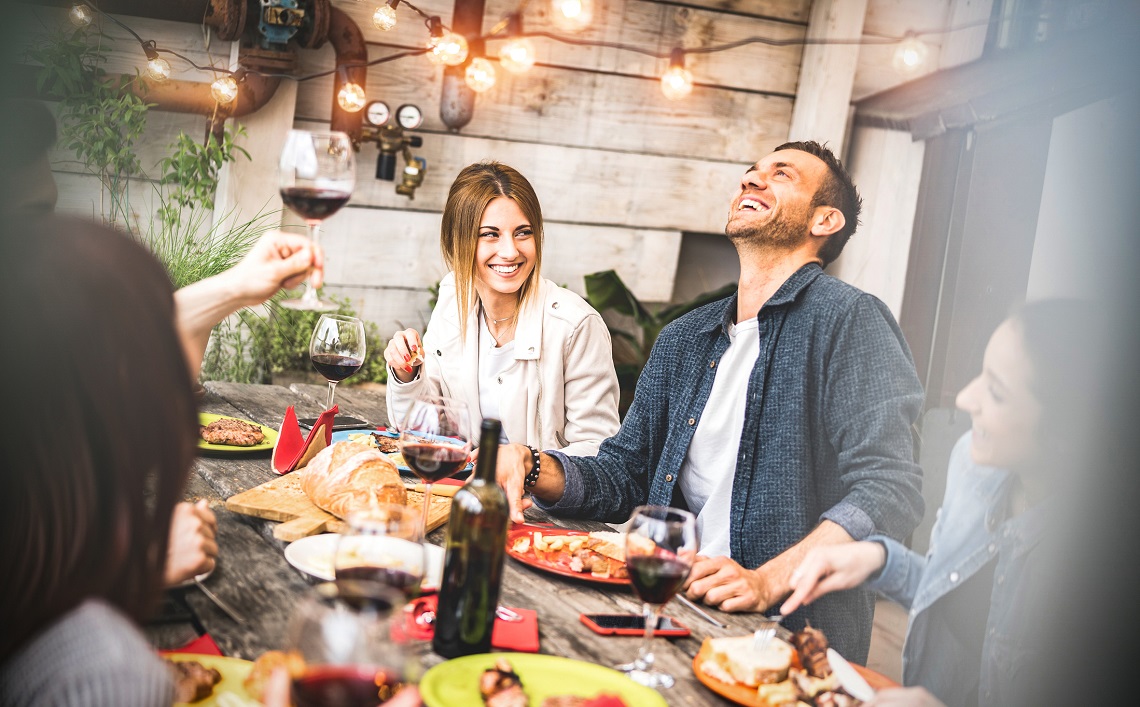In the October issue of National Liquor News, we analysed the retail opportunity of social occasions where consumers are told to BYO, thanks to data from Growth Scope.
After a pretty tumultuous 18 months, there’s nothing quite like getting together with those you love the most. Whether you’ve been in lockdown recently or not, social events and what they offer are being appreciated just that little bit more across the country.
And when these events happen outside of venues, specifically at the homes of friends and family, the usual ritual is to BYO, i.e. bring your own drinks.
A combination of easing restrictions, warming weather, the end of the year and the festive season is set to give rise to an increased amount of social events in the coming months. And according to Growth Scope data, 28 per cent of events in spring and summer fit into the BYO shopping occasion.
This makes understanding the nuances of the occasion quite important right now, in order for liquor stores to give great experiences to social butterfly customers and therefore build loyalty, trust and satisfaction.
Reason for the season
When customers are shopping for the BYO occasion, they are seeking drinks to take with them to a social gathering at the home of a friend or family member. Growth Scope data reveals that these gatherings most commonly bring together large groups of people in
a casual setting.
“On this occasion, there’s lots of people. Rather than being just ‘me and one other’, it’s two or three others on 25 per cent of occasions, four to seven other people on 31 per cent of occasions and more than eight people on 32 per cent of occasions,” said Andrew Nowicki, Director at Growth Scope.
“The top 10 reasons for the occasion are to spend time and catch up with friends, eat a meal, celebrate a holiday and spend time with family. What’s interesting and polarising about these events is that they are most often either regular [and happening quite often],
which I’d imagine would be the case for families and close friend groups, or irregular, happening yearly or half yearly.”
The atmosphere at these events is casual and the energy level is moderate, indicating people feel very comfortable and that they can ‘let their hair down’ on such an occasion. Nowicki said this is quite different to more formal occasions such as work functions or weddings, where people feel as if they are more ‘on show’.
He said that people at these occasions have a “positive sentiment,” with the most common feelings and thoughts being: “I feel bright, I want to make the moment special, I want to be reminded of good times, I want to feel rewarded and treated.”
Nowicki continued describing some of the lower scoring feelings and thoughts, which indicated the overall sentiment that: “I’m not here to show off, I’m not here to take risks, this is not about romance, and it’s not important that I feel confident,” showing different emotional needs are serviced by BYO occasions.
Winners of the occasion
In terms of what consumers are specifically drinking during BYO occasions, beer is the winner, consumed at 43 per cent of occasions. This is followed by spirits at 39 per cent, red wine at 27 per cent, still white wine at 23 per cent and sparkling wine at 23 per cent.
The most frequently consumed beverage types at these occasions however are beer and red wine, which Nowicki believes complements the main activities undertaken at these casual events, such as eating a meal. When it comes to format, most people are opting for regular sized bottles for wine and stubbies for beer.
Age and gender also plays a part in what products people are looking for in these occasions. For example, more females choose categories such as vodka, rosé and sparkling wine, while more males choose Scotch whisky and beer. Meanwhile, there’s a fairly equal split on bourbon and Shiraz, as well as a smaller gap between genders specifically for French Champagne.
In terms of some of the age demographic stats, Nowicki said: “For cider, 60 per cent of drinkers are under 40, whereas when we go to full strength Australian beer, its more 50/50. Mid strength beer has a higher incidence of younger people, and international beer is older, likely because they have more money. Elsewhere, bourbon is older, whiskey is younger and vodka even moreso.”
Growth Scope data also compares the availability of a beverage type at an event, and how suitable a person thinks that beverage is for the occasion. This is interesting as it highlights some disparities between the shopper and the consumer, especially at group events where they aren’t always the same person. To find this data, Growth Scope gets consumers to answer whether a type of drink was available at a BYO event, and whether they think it was a suitable choice to drink at said event.
A huge finding in this regard, according to Nowicki, is that: “More people think sparkling wine is suitable for these events than the amount that is available. This tells me that even though sparkling wine is big for these events, there is more opportunity. If people were more motivated to bring sparkling wine to these events, more people would drink it.”
Find the full story, including key findings about shopper behaviour and how to capitalise ont his, in the October issue of National Liquor News.
You can also catch Growth Scope’s informative presentation on Liquor In Lockdown at the Bloody Big Drinks Summit, available for all access ticket holders on-demand until October 2022.

